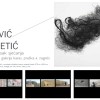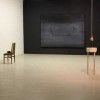Category: Exhibitions
3.10.13-18.10.13
Opening: Thursday, October 3, 2013, 7pm, HDLU Ring Gallery in Zagreb, Croatia
Featured artists include: Lasse Antonsen (DK), Sebastijan Dračić (HR), Alexandra Evans (US), David Eustace (CA), Candace Goodrich (US), Lætitia Gorsy (FR), Katrin Heichel (DE), Franziska Holstein (DE), Justus Jager (DE), Edgar Leciejewski (DE), Johannes Makolies (DE), Falk Messerschmidt (DE), Pavle Pavlović (HR), Jochen Plogsties (DE) in partnership with Anaïs Goupy (FR), Maria Sainz Rueda (DE), Igor Ruf (HR), Matko Vekić (HR)
One-sided Story artists include: Lasse Antonsen (DK), Jonathan Beer (US), Jason Bereswill (US), Natalia Borčić (HR), Tomislav Buntak (HR), Tania Cross (US), Sebastijan Dračić (HR), David Eustace (CA), Alexandra Evans (US), Fedor Fischer (HR), Sylwia Galon (PL), Céline Germès (FR), Lætitia Gorsy (FR), Jason Sho Green (US), Petra Grozaj (HR), Jane Lafarge Hamill (US), Christi Harrington (US), Jacob Hicks (US), Anna Kiljunen (FI), Anita Kontrec (HR), Karen Lebergott (US), Eric Mavko (US), J. Adam McGalliard (US), Ljiljana Mihaljevic (HR), OKO (HR), Pavle Pavlović (HR), Maja Pejčinović (HR), Igor Ruf (HR), Hilary Schmidt (US), Paulina Semkowicz (PL), Kaitlyn Stubbs (US), Etty Yaniv (IL), Zlatan Vehabović (HR), Matko Vekić (HR), Maeshelle West-Davies (UK), Josip Zanki (HR), Saša Živković (HR)
The group exhibition Wasser Schöpfen/ZAGRABITI is the culmination of The Residency chapter of One-sided Story, www.onesidedstory.com. One-sided Story – The Residency, directed by American artist Candace Goodrich, was a highly successful collaborative project based in Leipzig, Germany from May 2012 to May 2013, involving 38 artists within a year’s time, coming from Denmark, Finland, France, Germany, Poland, Croatia, Israel, the UK, Canada, and the United States. The Croatian Association of Artists and the Alumni Association of the New York Academy of Art were the primary partner organizations. Residents shared a 243 square meter atelier space in Halle 14, www.halle14.org in the Spinnerei www.spinnerei.de, living and working in Leipzig, exhibiting during the Spinnerei Rundgang, as well as in other European cities including Stuttgart, Dresden, Strasbourg, Paris, and New York City. For the occasion of German Reunification Day, October 3rd, and to celebrate Croatia’s entrance into the EU, One-sided Story and the HDLU have also invited special guest artists from Leipzig to exhibit in the HDLU Ring Gallery. All Leipzig artists will be present at the opening.
This exhibition has been made possible by the Ministry of Culture of the Republic of Croatia, the Goethe Institute Zagreb, FDDK e.V., and Ford Motor Vehicles.
 Irena Kojkova Pejović and Ana Sladetić
Irena Kojkova Pejović and Ana Sladetić
Memory Between Impression and Imprint
3.9. – 14.9.2013.
Opening of the exhibition on Tuesday, September 3rd 2013 at 8 pm.
CRO
Karas Gallery
Praška 4
10000 Zagreb
Opening hours:
Tuesday – Friday 11 am – 7 pm
Saturday and Sunday 10 am – 2 pm
Closed on Mondays and holidays.
Foreword: Antonia Došen
Baroque ladies, in the spirit of their time, kept their memorabilia in a form of messages on the handkerchief, collected pebbles or shells, hidden in cabinet drawers. Those were the “keepers” of their memory. Just like them, Irena Pejovic and Ana Sladetić, not only preserve their memory, but they present it its material form. But, how can we materialize memory? Ana wants, instead of
taking a picture of a particular place, to bring with her that felt/touchy feeling of the perceived space. She takes the feeling, and imprints it into her “mental closet of memories”. By imprinting the texture of the experienced space, she wants to “touch” her memories. Unlike her, Irena wants to preserve memory in situ (in its present form). This implies to creating the memory on the spot, in the process of printing. By printing two prints at once, one print becomes a memory of the other. By repeating this process, she creates a “fine clutter” of memories – individual experiences from one object to the other. Both artists use ready made materials in their work, with minimal or no intervention on their end. With this, they liberate from eclecticism and tradition, and unfettered push the boundaries of their own observations to part from learned academic form. Here, it’s not important how perfect the imprint is or the form, but the research and the process of making the print.
Ana Sladetić is oriented to preserving the memory in its physical form. She takes its measure. She uses frotage technique (rubbing) to make an impression of the place of visit. In this case, it’s about three walls. Their importance is as much as Ana gives them, the memory of them is limited by her will. Her works, by their reminiscence names Memory I, II and III, consist of video recordings of her performance, taking imprints of the walls in frotage technique. The Great Wall of China, The Berlin Wall and The Atlantic Wall are the carriers of Ana’s concept of imprinting memory. The distorted reality of the wall’s surface becomes a symbol of the same real surface – an abstract mark – Ana manages to preserve her memory in a texture that is rubbed off the walls surface. The imprints act like a cryptogram of her memories, which are read out with the help of visual recordings. Using a wall whose symbolic meaning is bearer of national identity and the real meaning of it is separating space, has no pretentious place in this work, Ana selectively collects memories of the people who created it, leading to the question “How can we preserve memory?”.
The antithetic term for Fine Clutter is about the artist’s personal experience of the materials used, and that creative chaos purified through imprinting it on the paper. In Irena Pejovic’s monotypes, we feel a strong urge for research and innovation, which reflects from the use of a very unconventional material – hair. Polymorphism of the hair enables multiple studies in making of the prints. Working with the human body in her earlier work, Irena attempts to capture its energy and movement by dematerializing the process, which brings her to its abstract form. Here, in a similar way she transforms part of the human body – the hair, preserving its memory in its present form. Looking at how the hair as an object behaves and changes in the process of printing, she pushes it thru several layers, and creates a new perception of the reality when printed. In some of the works, Irena Pejovic uses Chine-collé technique, but only to preserve its memory. She then removes the chine-collé, and this creates a memory of it, a ghost print left on the base paper. By tearing rice paper, and printing two sheets at once simultaneously, she creates a memory of one print to another, resulting in a new moment/object.
Antonia Dosen
This exhibition is realized thanks to the support of the Ministry of Culture of the Republic of Croatia and European Cultural Foundation.
 Gallery Meno parkas
Gallery Meno parkas
Rotušės a. 27
Kaunas
Lithuania
5.7. – 31.7.2013.
Myth and Art
Exhibiting:
Julija Pociūtė (LT)
Povilas Ramanauskas (LT)
Gabrielė Tamoliūnaitė (LT)
Tajči Čekada (HR)
Ivan Fijolić (HR)
Ksenija Kordić (HR)
The Myth and Art exhibition is a result of collaboration between Croatian Association of Artists, Zagreb and Gallery Meno parkas, Kaunas. This is a joint exhibition of Lithuanian and Croatian artists that deal with the relation between myth and art in their unique approach.
Firs exhibition will be held in Gallery Meno parkas in Kaunas July 5 – July 31 2013 and the second exhibition will be realized in Barrel Gallery September 2 – September 14 2013 in the Home of Croatian Artists.
Exhibition Myth and art is kindly supported by the Ministry of Culture of the Republic of Croatia, City Office for Education, Culture and Sport Zagreb, Lithuanian Culture Support Foundation and Kaunas City Municipality.
Joint catalog with the texts of Giedrė Legotaitė, Gintautas Mažeikis, Suzana Marjanić and Josip Zanki will be presented at the opening of the exhibition in Kaunas.
“Myth and Art” is a part of gallery “Meno parkas” project “The Young. Green Consciousness”.
Tadej Pogačar & P.A.R.A.S.I.T.E. Museum of Contemporary Art
The Big Archive
6 – 19 May 2013
Opening: Monday 6 May, 6 pm
PM Gallery | Ring Gallery
Trg žrtava fašizma bb, 10000 Zagreb Croatia
Retrospective exhibition
Hours: Tuesday – Friday 11 am – 7 pm;
Saturday–Sunday 10 am – 2 pm Monday closed.
“Systems work because they do not work.”
Michel Serres
The Big Archive is a retrospective exhibition covering two decades of the creation and operation of Tadej Pogačar and P.A.R.A.S.I.T.E. Museum of Contemporary Arts. It represents the largest and most comprehensive presentation of his work ever seen in Croatia. The exhibition includes video works, objects, photography, works on paper, artist books and installations.
Pogačar’s parasitism is a subtle deconstruction of the horizont of the everyday and a ruthless challenging of the social systems used to establish the center, dominance, and power in everyday life, art, and society. In his transdisciplinary research based projects, among other things, he references the theory of French intellectual and philosopher Michel Serres who developed the concept of the parasite, of the so-called third person as a personification of the third space. This concept carries a revised consideration about the basic categories in social sciences. According to Serres, humans are universal parasites who feed off of nature and other people.
Tadej Pogačar engages in interventionist logic, institutional critique, and critical research on social and political issues as well as participatory and collaborative projects. In his projects he deals with parallel economies, self-organisation, urban minorities, do-it-yourself architecture, the transformation of public space, control, etc. Many of his projects are long-term (for example, School’s Out, Kings of the Street, Street Economy Archive, P.A.R.A.S.I.T.E. Public Sculpture) and include teamwork and active participation. One of the most complex projects is CODE-RED (1999–present), which employs various forms of public action and activism as well as subversions in urban, media, and virtual environments.
Tadej Pogačar has exhibited widely, most recently at the Museum of Contemporary Art Metelkova (MSUM), Ljubljana; the Gallery for Contemporary Art, Leipzig (2012); the ZKM – Centre for Art and Media, Karlsruhe (2011–2012); the Vojvodina Museum of Contemporary Art, Novi Sad (2011); as well as at Manifesta 1 in Rotterdam and at biennials in São Paulo, Venice, Istanbul, Prague, and Tirana. He has also had exhibitions at the MUMOK, Vienna (2009); the San Francisco Art Institute (2007); the NGBK, Berlin (2007); the Stedelijk Museum (2004); the Central House of Artists, Moscow; and the Museo de Arte Carillo Gil, Mexico City.
Pogačar is also the founding and managing director of the P.A.R.A.S.I.T.E. Institute, a non-profit cultural institution that operates the P74 Centre and Gallery and the KAPSULA bookshop and project space in Ljubljana.
He is the recipient of many awards, grants, and residencies, including György Kepes Fellowship Grant for Advanced Studies and Transdisciplinary Research in Art, Culture and Technology (MIT, Boston, 2012–2013), the TREND Award for visual art (Ljubljana, 2007), the Jakopič Prize, Slovenia’s main national award for visual art (2009), the Shrinking Cities grant (Leipzig, 2004), the Franklin Furnace Grant for Performance Art (New York, 2001), the AIR_port residential program Forum Stadtpark in Graz (2003), and an Austrian Cultural Forum residency in London (2003).
The exhibition has been prepared in cooperation with P.A.R.A.S.I.T.E. Institute and is kindly supported by funding from the Croatian Ministry of Culture, Ministry of Culture of the Republic of Slovenia and the Municipality of Ljubljana, Department for Culture.













